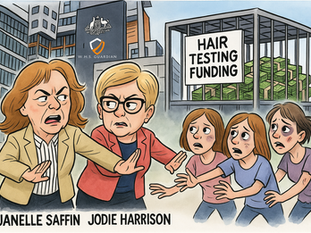

John Holland contractor convicted in First WHS Prosecution of 2025.
Feb 7
3 min read
3
486
1
The New South Wales District Court has handed down its first Work Health and Safety (WHS) prosecution of 2025, convicting Silver Raven Pty Ltd and imposing a $180,000 fine following an incident that left a worker with serious injuries. The case, SafeWork NSW v Silver Raven Pty Ltd [2025] NSWDC 8, underscores the critical need for rigorous worker vetting and stringent adherence to WHS compliance measures.
It should be noted that Silver Raven has a prior conviction for similar offences in 2015 (see SafeWork NSW v Silver Raven Pty Ltd [2019] NSWDC 425), where workers were exposed to similar risks due to safety failures. Notably, the same judge, prosecutor, and defence barrister were involved in both cases. Given this history, it is unclear why His Honour determined that the company has good prospects for rehabilitation and applied mitigating factors in sentencing. However, this is likely attributable to the plea of guilty and some improvement in WHS practices since their 2015 offending—albeit not effective in preventing this incident.
The Incident: A Failure of Safety Systems
On 1 September 2021, Silver Raven Pty Ltd was undertaking high-pressure water jetting as part of the Batemans Bay Bridge replacement project on which John Holland is the primary contractor. The injured worker, Mr Diamond Notaras, was operating a high-pressure water jet when the metal connector between the gun assembly and the hose failed. The resulting failure led to a violent hose detachment, causing serious degloving injuries to Mr Notaras’ right arm.
Investigations revealed that while Silver Raven had a comprehensive safety system, critical gaps led to the incident. The equipment used on the day was not fit for purpose, and the required hose restraints were not properly implemented. Additionally, an amendment to the Safe Work Method Statement (SWMS) removed the requirement for high-pressure gun operators to wear Kevlar protective gear, increasing worker exposure to serious injury risks.
Court Findings: Aggravating and Mitigating Factors
Judge Scotting found that Silver Raven’s failure to enforce proper controls was a major contributing factor in the incident. The risk of hose detachment was well-documented, yet safety measures were not strictly followed. Despite this, the court acknowledged several mitigating factors:
Silver Raven demonstrated genuine remorse and took immediate corrective actions.
The company implemented additional safety measures, including reinstating full-body Kevlar PPE, engaging industry experts, and improving equipment maintenance protocols.
The directors, who were personally affected by a family tragedy at the time, had since taken a more active role in WHS compliance.
These considerations led to a reduced penalty, with the court applying a 25% discount for Silver Raven’s guilty plea, bringing the fine to $180,000.
The Importance of Worker Vetting and Training
One key takeaway from this case is the importance of thorough worker vetting and competency assurance. Mr Notaras, though trained in high-pressure water jetting, had not received adequate instruction on securing safety shrouds with cam buckle restraints—an oversight that directly contributed to the incident. Similarly, the leading hand in charge of operations, despite his 20 years of experience, failed to prevent the use of non-compliant equipment.
This raises important questions for all PCBUs (Persons Conducting a Business or Undertaking):
Are workers adequately trained not just in theory, but in practical safety application?
Do supervisors have the competency to identify and rectify safety issues before work commences?
Is there a system in place to verify that workers are properly following established safety protocols?
Lessons for Businesses: Preventing Similar Incidents
This case serves as a stark reminder that having a WHS system in place is not enough—active enforcement and worker competency are key. Businesses must ensure that:
Worker qualifications are thoroughly vetted, and additional competency checks are carried out regularly.
PPE and safety measures are not compromised for convenience, even if workers find them uncomfortable or impractical.
Supervisors are trained to intervene when safety risks arise, preventing workers from using non-compliant equipment.
Equipment inspections are rigorous, ensuring all parts meet safety standards before use.
Final Thoughts
The first WHS prosecution of 2025 sends a clear message: businesses cannot afford to overlook safety compliance, even with experienced workers. Ensuring that employees are properly vetted, trained, and supervised is just as important as having documented safety procedures.
Silver Raven’s case is a reminder to all PCBUs that a lapse in safety enforcement can lead to severe consequences, both legally and financially. As the WHS landscape continues to evolve, businesses must remain proactive in not just setting, but enforcing, safety standards to protect their workers and their organisations from liability.




If you're looking to enhance workplace safety and stay compliant, their expert WHS consulting services in Adelaide are top-notch. They offer tailored advice, proactive risk management, and practical strategies that make Health & Safety simple and effective!